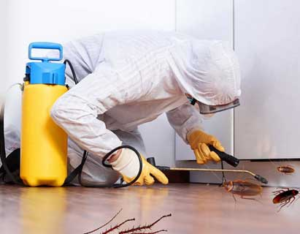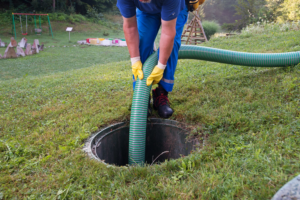Pests are unwanted organisms (such as insects, weeds, rodents, diseases, or viruses) that negatively impact people or property. They can also alter environmental factors such as soil health, nutrient content, and moisture availability.
Chemical controls include natural and synthetic chemicals that are designed to target a specific species without harming non-target plants or animals. These are often part of an integrated pest management strategy. Click the https://pestcontrolkansascitypros.com/ to learn more.

Prevention is a proactive strategy that aims to keep pests out of homes and businesses by eliminating their food, water and shelter sources. Prevention can include modifying the landscape to remove rodent nesting sites, removing trash in sealed containers, sealing all entry points and cleaning frequently to prevent buildup of garbage. Pest control professionals can also use physical and mechanical controls, such as traps, barriers, screens, netting, radiation and electricity to alter the environment.
It is important to know the difference between preventative and reactive approaches to pest control, as they are not mutually exclusive. Preventive methods may be cheaper than treatment options, but they can be more difficult to implement successfully. It is also important to recognize when a problem is serious enough to warrant professional intervention. Some indicators include the appearance of gnaw marks or holes, odors from feces or droppings and signs of infestation such as visible habitation or the presence of pheromone trails.
While preventive measures are key to reducing pest populations, some pests require a more intense approach. For instance, a cockroach infestation can be difficult to eradicate once they have established themselves, and can cause significant damage to structures. In these cases, a combination of prevention and eradication treatments are necessary to ensure a complete pest control solution.
When it comes to prevention, an effective program must be consistent and based on sound knowledge of pest biology and behavior. This will allow the pest control operator to develop a plan that is best suited to the situation, minimizing the impact on non-target organisms and the environment.
The best approach to prevention is one that involves a team effort. This includes building a partnership with your pest control provider and keeping an eye out for the early warning signs of infestations, such as the appearance of spider webs or signs of fecal matter. These are all indications that you should contact a pest control operator to assess and treat the problem. Then, it is crucial to continue vigilance and regular inspections of the property to catch problems before they become serious.
Suppression
Pest control involves reducing the numbers of pests to levels that can be tolerated or are acceptable. This can be achieved by using prevention, suppression, or eradication tactics. Prevention means keeping the population below damaging thresholds; eradication is the complete destruction of a pest population.
Many agricultural practices help prevent or suppress pests. Physical barriers such as netting over small fruits and screening in greenhouses, mulching, and traps can all inhibit pest insect or bird access to desirable plants. Some crops are resistant to specific pests, so use of these varieties when available can keep populations below harmful levels. Chemicals such as pheromones, juvenile hormones, and radiation sometimes control pests by making conditions unfavorable.
Natural enemies of crop pests provide an important ecosystem service that reduces pesticide costs to farmers and society. This service is especially valuable in agroecosystems with high proportions of natural ‘edge habitat’ between fields. However, in agricultural landscapes where these habitats are limited or eliminated, the contribution of natural enemy predatory insects to pest control declines.
Augmentative biological control involves raising or introducing a natural enemy species in sufficient number to suppress a targeted pest. This is most often done in greenhouses, nurseries, and some fruit and vegetable fields. A common example is the mass rearing of parasitoids and predators to release them en masse into an area infested with a particular pest insect. When used appropriately, this can be a successful form of pest control that is less costly than chemical controls.
A natural enemy can be weakened by factors such as competition, disease, or predation from other natural predators and enemies. A careful risk assessment must be made before releasing these organisms to ensure the target pest is suppressed, not destroyed.
Suppression is usually accomplished through a combination of biological and chemical tactics, including monitoring and scouting. Whenever possible, a strategy should be used that does not involve the use of chemicals. Chemicals should be used only when the pest damage exceeds a tolerance level or when no other option exists. Integrated pest management (IPM) strategies are designed to minimize the need for pesticides by applying prevention and suppression tactics in conjunction with IPM-approved eradication or control methods.
Eradication
Eradication is the ultimate goal of pest control. However, it is important to remember that the term eradication is not synonymous with elimination. In fact, a microbe can only be eradicated when it is no longer present in all its natural reservoirs, such as animals, plants, and humans. This is an extremely difficult task and is only accomplished when a disease has been eliminated worldwide, rather than just in one or more countries.
An effective eradication strategy requires a multifaceted approach that often utilizes different control methods simultaneously or in sequence. This includes a variety of tactics such as chemical, biological, cultural, and physical controls. Chemical controls are intended to reduce the numbers of pests by killing or injuring them, while cultural and biological controls make the environment less suitable for the pest population by limiting its access to food, water, shelter, or space.
Because the environmental conditions that led to a particular pest infestation vary across geographic regions, pest control strategies must also vary across locations. An example of this is the implementation of early warning systems in agricultural areas where pesticide resistance can be a serious problem. These systems often use computers to track weather data around the clock and predict when a pest is about to become economically significant. This allows farmers to spray their fields only when it is actually needed and minimizes damage to crops.
The eradication of diseases also requires a wide range of diagnostic tools. These must be sensitive enough to detect the presence of a specific microbe, but they must also be sufficiently simple that they can be used globally by laboratories with varying capacities and resources.
Eradication of a pest can be achieved only when a sufficient number of people are dedicated to the effort. For this reason, the eradication of infectious diseases must be a global endeavor, coordinated by the World Health Organization (WHO).
Monitoring
Monitoring is a vital component of many pest control strategies. It helps to determine when threshold levels are reached and whether or not pest control measures have been successful. In addition, the data can help identify and understand factors that may be contributing to the problem.
For outdoor areas, monitoring generally involves identifying and observing insect and mite populations and assessing changes in severity of infestation. This can be accomplished through random plant inspections, sticky traps and indicator plants. It is important that a healthy dose of common sense be used to monitor, as hot-spots should be investigated but their relative proportion to other parts of the field must be kept in perspective. Also, damage caused by environmental stress can often be mistaken for insect activity, and should also be evaluated.
Eradication is not a common goal in outdoor situations, but can be necessary in some cases – especially in enclosed environments such as dwellings; schools; health care, food processing and storage facilities; and office buildings. In these situations, pest control often focuses on prevention and suppression. Eradication may also be possible for some pests that are not indigenous to the area, such as Mediterranean fruit fly and gypsy moth.
Identification of a pest is the first step in developing an effective pest control strategy. It is essential for understanding basic information about the organism such as its life cycle, if it can be controlled, and when it might cause economic damage. It is also useful in determining what types of management tactics are appropriate, and whether or not a pesticide should be applied.
Good record keeping is a key part of monitoring. It can be as low-tech or high-tech as needed – for example, a spreadsheet or photo collection. It is important that all observations are time and location stamped when possible (a smartphone makes this easy!) and that they be analyzed over time and across other factors. Many scout-centric pest monitoring networks use tailored data collection systems to enable this.
Once the data is collected, it must be utilized to solve problems. A good pest control professional should be able to take the information and determine what the underlying problem is and how to address it. For example, if a facility starts to get German cockroaches in their break room, the data should be used to figure out why they are getting caught in the traps (old food behind refrigerators and cabinets) and fix it. This will reduce the number of roaches caught in traps and the amount of product that is lost to cockroach damage.





